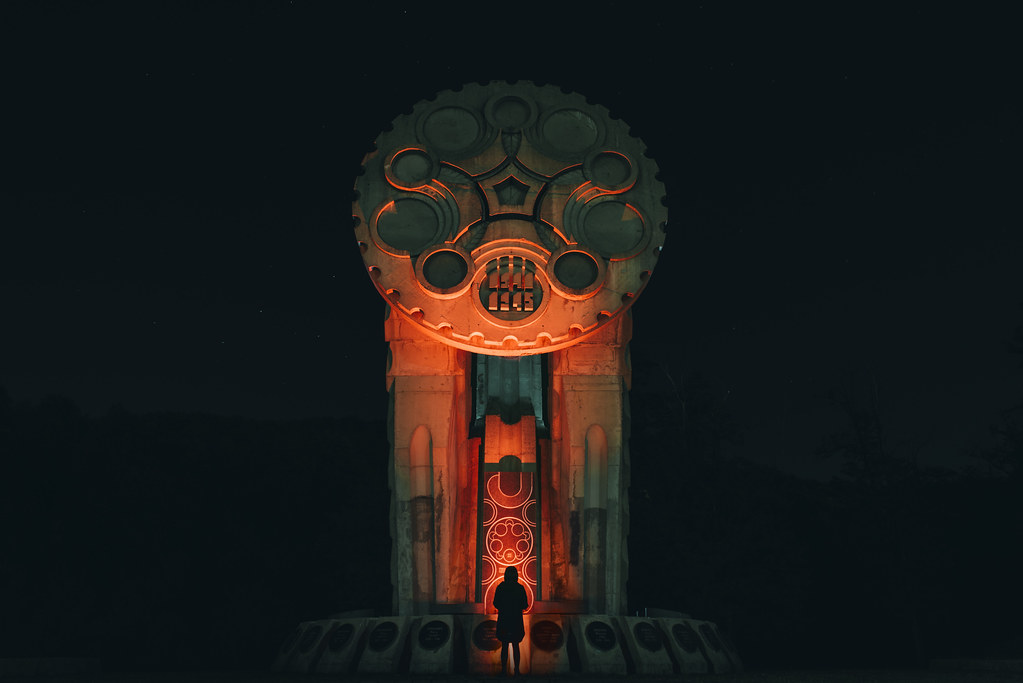#communist monument
Text

77 notes
·
View notes
Photo
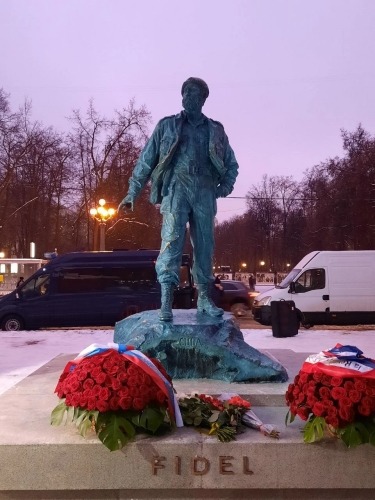

Moscow: Communists of the United Communist Party (OKP) came to the opening of the monument to Fidel Castro
In Moscow, on November 22, 2022, on Fidel Castro Square, the grand opening of the monument to the great commander, the leader of the Cuban Revolution, took place.
After Cuban President and First Secretary of the Central Committee of the Communist Party of Cuba Miguel Diaz-Canel, the communists of the OKP together with representatives of allied left organizations laid flowers at the open monument.
#Fidel Castro#communist#revolutionary#Moscow#monument#OKP#Miguel Diaz-Canel#Russia#solidarity#socialism
79 notes
·
View notes
Photo

stalin’s boots
#hungary#magyaroszag#budapest#buda#baross gabor telep#balatoni ut#memento park#communist relic#stalin#boots#monument
96 notes
·
View notes
Text
Georgi Dimitrov monument in Cotonou, Benin.

11 notes
·
View notes
Photo

Buzludzha (a communists monument left to nature) · Bulgaria
#Buzludzha#Bulgaria#communist#architecture#monument#left to nature#бузлуджа#комунустически паментник#изоставен
4 notes
·
View notes
Video
Monument to Fallen fighters of WWII (Spomenik Palim Borcima U Drugom Svjetskom Ratu), Nikšić, Montenegro by Xiao Yang
0 notes
Text
Generating plasm and stacking matchboxes: how to build a better future through collective consciousness.
Alternatively - Steban and Ulixes were building Tatlin's Tower so I have to talk about the symbolism or I will explode!!


While completing the communist vision quest you get an opportunity to build a model of "The Tower of History", depicted on the last page of "A Brief Look at Infra-Materialism": a leaning tower wrapped in a dramatic helix. The scale model you make is a mirror image of Tatlin's Tower - a design for a grand monumental building to the Third International: the government organization advocating for world communism.
The main idea of the monument was to produce a new type of structure, uniting a purely creative form with a utilitarian form. Meaning it would function as an office building while also serving as a symbol of cultural significance. And let me tell you, this bad boy can fit so much symbolism in it.
Tatlin was commissioned to develop a design in 1919, after the 1917 February Revolution - a parallel to Disco Elysium's Insulinde we're witnessing post-Antecentennial Revolution.
Tatlin's work was inspired by high revolutionary goals, which are evident in the visual direction of the tower as well, expressing the ideological strive for achieving something that has never been done before, overcoming the odds. The structure "oscillates like a steel snake, constrained and organized by the one general movement of all the parts, to raise itself above the earth. The form wants to overcome the material and the force of gravity..."
The tower has meaning packed even in the materials. For example, the glass structures (marked A, B, C on the architectural rendering) were meant to serve legislative, executive and informative initiatives while rotating around their axes at different speeds. The material signified the purity of initiatives, their liberation from material constraints and their ideal qualities.
But here's the best part. The spirals.
"The spiral is the movement of liberated humanity. The spiral is the ideal expression of liberation: with its base set in the earth, it flees from the ground and becomes a symbol of the suspension of all (...) earthy interests." They are "the most elastic and rapid lines which the world knows" that represent movement and aspiration, continuing the themes of progress and freedom, but they also refer to something else.
In the process of building the matchbox model Rhetoric points out: "It's almost exactly as Nilsen's sketch imagined, a physical manifestation of the dialectical spiral of history."
The shape of the tower is a representation of dialectical development of history, first visualized as a spiral by G. W. F. Hegel. He pictured transformational change as "both linear and circular in order to be short-term responsive, i.e. possibly negating itself, and long-term strategic, i.e. a process of development."
Hegel's dialectics would later be reinterpreted through the prism of materialism by Marx and Engels to create dialectical materialism - the basis for historical materialism.
"Still, this idea, as formulated by Marx and Engels on the basis of Hegels’ philosophy, is far more comprehensive and far richer in content than the current idea of evolution is. A development that repeats, as it were, stages that have already been passed, but repeats them in a different way, on a higher basis, (...) a development, so to speak, that proceeds in spirals, not in a straight line; a development by leaps, catastrophes, and revolutions; (...) the interdependence and the closest and indissoluble connection between all aspects of any phenomenon (history constantly revealing ever new aspects), a connection that provides a uniform, and universal process of motion, one that follows definite laws - these are some of the features of dialectics as a doctrine of development that is richer than the conventional one."
The tower embodies progress in materialist understanding of history while also indicating the connection to ideological plasm, a manifestation of "the proletariat's embrace of historical materialism", necessary to create a better future.
According to Nilsen, the proletariat of a revolutionary state can generate enough plasm to create extra-physical architecture that "disregards the laws of 'bourgeois physics' and instead relies on the revolutionary faith of the people for structural integrity."
This function of plasm implies that The Tower of History can be created only under revolutionary circumstances - without a sufficient amount of plasm even the matchbox model didn't stay up. The exact same sentiment is expressed about Tatlin's Tower: "We maintain that only the full power of the multimillion strong proletarian consciousness could bring into the world the idea of this monument and its forms. The monument must be realized by the muscles of this power, because we have an ideal, living and classical expression the pure and creative form of the international union of the workers of the whole world."
Nilsen called it "the highest expression of Communist principles, a society whose literal foundation is the faith of its people."
Tatlin's Tower was a symbol of faith in the revolutionary future, the global triumph of Marxist socialism. A monument "made of iron, glass and revolution."
It was never built in real life, and neither was The Tower of History in the world of Elysium.
But you can try to see if there's enough plasm between the three of you. And the matchbox tower stays up for a long moment, quivering with an improbable energy. You believe it can say up - and it does.
So you have to believe; whether it's for collective action or generating ideological plasm. Then, together, maybe you'll be able to build as much as 0.0002% of communism.
#i tricked myself into reading leftist theory for disco elysium#never thought i would be reading Lenin to write about videogame worldbuilding#tower related quotes are from ''The monument to the Third International'' by Nikolai Punin#infra-materialism#disco elysium#de#de meta#disco elysium analysis#disco elysium spoilers#disco elysium meta
635 notes
·
View notes
Text

Monument House of the Bulgarian Communist Party / Buzludzha Monument, by Georgi Stoilov (1974-1981). Left abandoned since the fall of communism in 1989 for decades, preservation works are now ongoing.
Buzludzha mountain, Bulgaria.
© Roberto Conte (2022)
Follow me on Instagram: https://www.instagram.com/ilcontephotography/
#architecture#architecturephotography#architettura#architektur#brutalism#brutalist#brutalismo#buzludzha
123 notes
·
View notes
Text
Decolonisation is beautiful.
Here’s just one example from one small corner of one small Estonian town, Viljandi.

Picture 1: An ugly communist party building and car park, built by the soviet occupiers on top of a memorial they demolished for local people who died fighting for independence.

Pictures 2 & 3: The memorial, lovingly recreated down to every last detail, is back at the heart of a public square.

There are some commentators abroad who like to lecture russia’s neighbours not to “erase history” by removing the scars of occupation.

It’s weird because this kind of thing is normal everywhere else in the world. In fact, the very same people who get particularly upset about occupation monuments being removed here also tend to be very articulate about the importance of removing statues to ousted oppressors elsewhere. They just think russian imperialism gets a free pass.
Newsflash: It doesn’t.
Rather than erase history, plenty of occupation junk across the Baltic countries has been transferred to museums so that future generations can learn about it in its proper context. But it doesn’t belong in our public spaces. Local people here hated that brutal communist party building, which desecrated the memorial in a way so symbolic of the wider ugliness of russian imperialism.
Public spaces belong to the people who actually live here and should reflect the kind of free, modern, open, independent countries that we are - and which remember those who made it possible.
The other bad take on this issue is to constantly frame this kind of thing as a ‘reaction/response/message to russia’. That, again, is imperialist thinking. We make decisions for our countries based on what we want our countries to be. We’d want to remove this kind of junk even if russia had ceased to exist in 1991 or if it had flourished into a friendly democracy.
In fact, here in Viljandi, it took three decades of planning and sculpting to recreate the monument based off grainy photos of the original. The building was finally knocked down a couple of years ago and the memorial unveiled this midsummer.
In the interim, the building was expanded after the occupation to serve as Tourist Information, which was pretty ironic considering the communist aim was to keep us closed to the world. But that has a new home and the time has come to return the space.
There was quite a debate locally about whether to recreate it exactly or update it with some kind of modern reinterpretation. Both are legitimate, interesting ideas.
In the end, the only difference is that the materials are now of a much higher quality. I think they made the right decision.
And the fact that it was recreated in perfect detail by people who never saw the original but emerged from occupation with the same determination to live free does send its own new message from our time too. We will continue to exist.
Decolonisation can suffer setbacks, horrendously painful as we see in Ukraine, but the long term trend is unstoppable. The special protection that russian imperialism still enjoys in the minds of many around the world is starting to shatter.

I stopped by to take a photo of it for you all and a rainbow appeared. 🙂
#decolonisation#viljandi#estonia#soviet times#russian imperialism#ukraine resistance#stop russian invasion#putin war criminal#ukraine war#help ukraine#i stand with ukraine#slava ukraini#give weapons to ukraine
288 notes
·
View notes
Note
i kknow this may not be your area of knowledge but do you know why the pope is suddenly saying this stuff re: marxism? hes always been progressive and genuine in his beliefs (same gender stuff, the lunch w the drag queens, etc.) but to outright say "we should befriend communists" is surprising to me. power play? old age? hes also a communist? idk
i was raised catholic and spend most of my time at a jesuit college! it's a complicated issue, but i'll do my best. edit: i also want to say that i am both pro-francis and generally very unhappy with the church in general, so i've tried to be as objective as i can.
pope francis is, first, argentinian, and second, a jesuit. as a south american he knows liberation theology, a marxist-based theology of the poor which developed in south america during the 1980s. because of its association with marxism liberation theology was treated with huge suspicion by the catholic church. cardinal ratzinger, later benedict xvi, wrote a fairly nasty castigation of liberation theology in the 80s- if i find it i'll link it.
this is the context, i believe, of his comments on marxism: it's not only a home ideology for francis, it's more necessary than ever in our current social climate. francis has always been what most catholics would consider a liberally minded pope, he exhibits that fabulous tenet of catholic social teaching called "the preferential option for the poor," and everything he has done during his papacy gestures to this, including his encyclical on climate change, laudato si, and his recent moves towards affirmation of gay and trans people being baptized. even his tour of canada to make formal apologies for residential schools came about for similar reasons: it wasn't perfect, but the reason there hadn't been a formal catholic apology prior to francis was because doctrine around papal infallibility dictates that a sitting pope cannot refute or roll back the statements of a previous pope: an apology for the doctrine of discovery and residential schools would have constituted admitting that a previous pope had been wrong, which is tantamount to admitting that god himself is wrong, since the pope is the representative of god and a direct descendent of the apostle peter. doing as much throws the entire church into a very negative light, but francis apologized anyway- which, again, while deeply imperfect is a huge deal within the church, certainly infuriated a lot of conservatives, even if it seems essentially inadequate to non-catholics.
francis isn't a communist, i don't think, but he is good. he's very apart from what constitutes the majority of the catholic magisterium (ordained members of the church- priests, bishops, cardinals, etc)- a kind of internal division developed after vatican ii, where on one hand you had conservatives who preferred traditionalism, the type of leaders who wanted to keep things QT with the reagan administration who was funding mass murder in nicaraugua- that is, at it's core, the primary reason why liberation theology was rejected when it first emerged, why it has been slow to gain traction in the church. ratzinger was a staunch conservative, and john paul ii was less so; leadership in the church goes through cycles where traditionalists are usually followed by more liberal-minded popes, who appreciate vatican ii for the groundbreaking and monumental achievement that it was rather than acting as if it signified a breakdown of religion.
the other thing is francis being a jesuit: i have a lot of jesuit friends, have gotten most of my theological education from jesuits, and applied to a jesuit college for my phd. jesuits are incredibly socially minded, dedicated consistently to social awareness and justice, and less inclined towards enclosure and privation from the world at large than other orders. they are also dedicated to poverty, like franciscans. the jesuit order is not perfect (they still will not allow a women's jesuit order, and they have a dismal track record of colonialism) but francis is the first jesuit pope and this is a huge deal in terms of the type of theology that his leadership embodies as a result. jesuists are not as a monolith liberal-minded and forward thinking, but they are generally more ready to adapt and evolve catholicism to meet contemporary needs rather than maintainig strict adherence to traditional views at the expense of the body of christ- that is to say, the body of all believers, or all whom god loves, which is everyone. incidentally, leonardo boff, one of the fathers of liberation theology, was also jesuit.
this is a pretty and dirty answer to your question but i hope it makes sense- essentially francis is recognizing that the needs of god's people override that of the church, because god's people are the church equally or more than the magisterium is the church, but it is the magisterium who has been preferred historically. but he has surprisingly little room in which to make moves towards this because of canon law and other doctrines. he's doing his best, though, more than i ever thought i'd see: i appreciate and love him deeply.
44 notes
·
View notes
Text

Relic of General Vo Nguyen Giap's residence and workplace, Dien Bien, Vietnam: Võ Nguyên Giáp was a militarily self-taught general of the People's Army of Vietnam (PAVN), communist revolutionary, and politician. This place preserves many relics of historical value, such as the living quarters and office of General Vo Nguyen Giap, Deputy Chief of General Staff Hoang Van Thai, Head of the Communications Department Hoang Dao Thuy, etc. Over time, the monument retains the wild and heroic aspect of national history.
28 notes
·
View notes
Photo
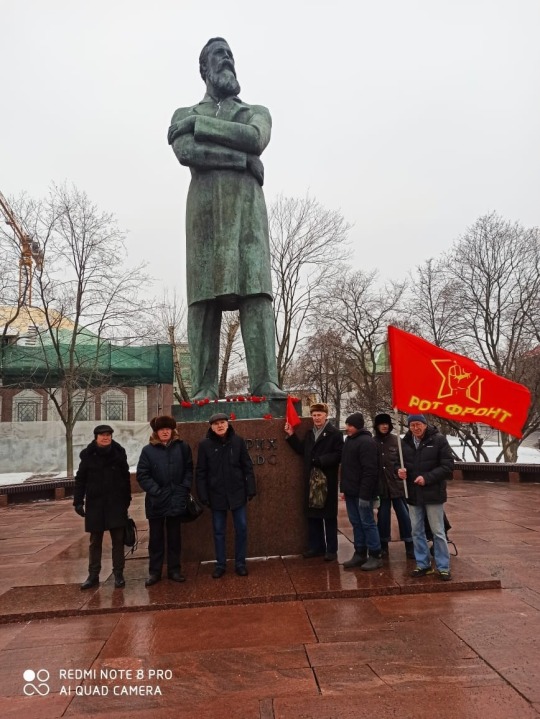
On November 28, on the 202nd anniversary of the birth of Frederick Engels, the Moscow organizations of the United Communist Party (OKP) and the Russian Communist Workers Party (RCWP) held a flower laying ceremony at the monument to the great thinker.
The laying ceremony was attended by representatives of the Communists of Russia party, the Labor Russia movement, and the Moscow Workers' Council. Remarks were made by First Secretary of the Central Committee of the OKP V.I. Lakeev, member of the Council of Workers of Moscow V.T. Shevchenko and V.A. Sabelnikov.
Via United Communist Party
37 notes
·
View notes
Text
(in response to a response to this post in which I joked about political parties constantly splitting; hopefully this offers some insight rather than inciting)
I am not familiar with the Party for Socialism and Liberation beyond what I read on their Wikipedia page, so I'm happy to hear they engage in worthy causes, but that alone is insufficient to exclude them from what I maintain is a much deserved roasting, along with their fellow travellers in Australia with whom I have more direct experience.
over here, the local communists can be found in front of the state library every Sunday afternoon, offering hot food, warm clothes, and revolutionary inspiration to the homeless population of Melbourne (or anyone else who happens to be passing by and wants to have an argument with them, because as with me that's how they like to make friends with people I think).
and this is a truly wonderful thing that they choose to do! feeding the hungry, clothing the cold, engaging in heated debate with the otherwise ignored, it's beautiful and it makes this corner of the world a little brighter than it would otherwise be.
I don't volunteer any of my time to that particular effort; I could say that I don't have the time to spare or that my skills don't run in that direction but really it's just that everything you do is contingent on who you know and how you know them, we are all firmly embedded in the web of social connections that define our lives and my path took me in other directions; had a few things twisted differently in university then who knows.
I do donate a little money towards housing the homeless as I believe it's a crime that this city compels anyone to sleep rough outdoors; this is a deliberate policy choice that we did not need to make and do not need to continue, it is a problem that we created and could solve at any time, and since I'm quite vocal about this I'm obliged to put up or shut up etc. and hopefully my contribution will offer some shelter to those who would otherwise be denied it.
but while some volunteering here and some donations there is certainly better than nothing, it's not enough, it's nowhere near enough! the gap between what is done and what needs to be done is staggering! it galls me, and I joke about it because things can be very funny even when they make me mad, the serious is often funny and the funny is always very serious.
when right-wing political parties fracture and begin to eat each other alive it's funny because the people involved are usually assholes, their vain attempts to spin the narrative in their favour are hilarious, and pratfalls and petty drama are just a reliable source of humour, and all of these reasons apply just as well to the scenario of left-wing political parties gratuitously shooting themselves in the dick.
however a right-wing party getting fractious is entirely on brand: at least ideologically they're supposed to believe in the virtues of individual self interest and robust competition and a war of all against all and to the winner go the spoils, so why not stab each other in the back for personal glory at the cost of the greater good?
but a left-wing party is notionally founded on the dream of overcoming what ails humanity by way of collective action, the principle that cooperation can achieve what competition cannot, that class interests supersede all other antagonisms, and in that case what the fuck does it mean when that party cannot even cooperate with itself? what is left for us to offer but derision for such monumental failure, not even to fail in a valiant but doomed fight against a powerful adversary but to be torn apart by internal contradictions (!) and the inability to unite as one despite the professed importance of the mission?
Australia never banned the Communist Party, and as a liberal democracy we can be proud of that, but of course we never needed to: it faded into meaningless irrelevancy of its own accord (a tradition continued to this day by the Greens, who if they ever catch a whiff of electoral success and the chance of actually doing something useful will promptly collapse into acrimonious debates about ending capitalism and disappear up their own arse until everybody else loses interest).
so is it funny that organisations predicated on working together for the common good keep splitting? yes of course it's funny, it's fucking hilarious! and tragic, if you believe in the goal, and think that it ever had a chance of being achieved in this way by these people.
in the meantime the rites continue to be dutifully performed but the modern infrastructure of Marxist organisation resembles little more than a pyramid scheme or an evangelical church that exists solely for the purpose of sucking in enough idealistic students to perpetuate the ideology to the next generation, while ensuring that they stay carefully isolated from any ideas that might seriously challenge the status quo (or honestly even ideas that might help to understand the status quo, a prerequisite to doing anything about it); this is also a funny situation but it's getting a little bitter, and I don't enjoy seeing so much potential go to waste.
I've said more on this topic, scattered across the past few years of posts, but I think that probably conveys the gist of it, although of course as always I'm happy to keep talking.
82 notes
·
View notes
Text


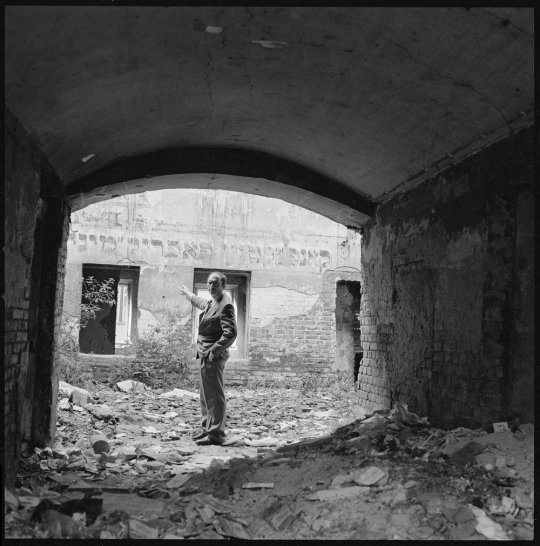

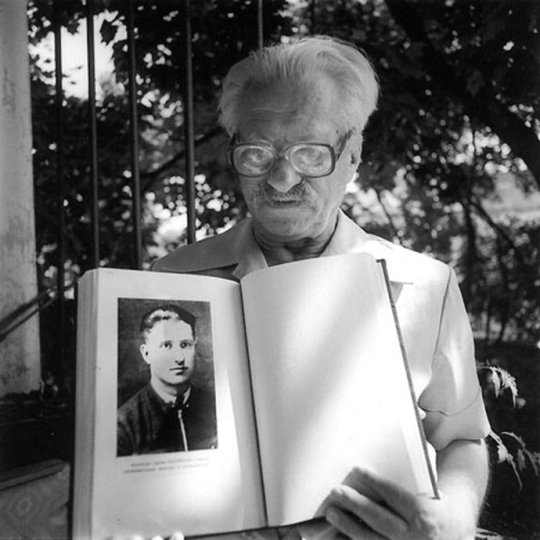
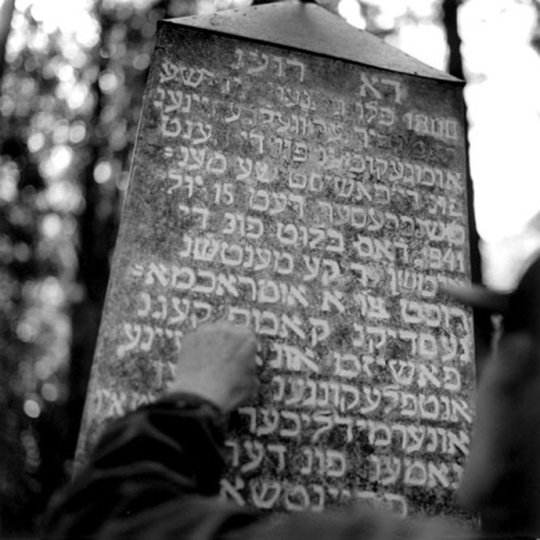
Laurence Salzmann "Lithuanian Memories" (Jewish life in independent Lithuania), 1995
"For most American Jews, the old country-"di alte heym"-exists only in memory. We have faded images, some stories, a few shreds that our grandparents carried with them. We assume Jewish History in Eastern Europe ended with Hitler; what he didn't wipe off the map, the Soviets must have bulldozed. But though their numbers are small, and their future painfully uncertain, tidy communities of Jews still exist in what once was the heartland of Yiddishkeit. Since the Soviet collapse, moreover, Jews in the newly independent Eastern European nations such as Lithuania have regained the right to a life that the Communists denied them. Here a former communal building is returned to Jewish use; there a cemetery or monument to the Shoah's victims is restored and maintained. Just short of complete extinction, they are still holding on, bearing witness to what we all have lost in the tragic and devastating last century." - Andrew Cassel
78 notes
·
View notes
Text
NOVI SAD, Serbia (JTA) — In the heart of downtown in Serbia’s second-largest city, nestled between brick buildings on a leafy street, sits a large synagogue.
With its 130-foot-high central dome and faded yellow brick facade, along with its Jewish school and offices on either side, the synagogue’s three-building complex has become a must-see tourist attraction, with multilingual panels in its courtyard explaining the area’s Jewish history.
The synagogue was built to accommodate up to 950 worshippers in the first decade of the 20th century. But like the city and Serbia more broadly, the building has clearly seen better days. On two recent days, a family was camped outside the entrance, begging passersby for money.
Before World War II, Novi Sad had roughly 60,000 inhabitants, 4,300 of whom were Jews — about 7% of the total population. Most were affluent merchants, lawyers, doctors and professors. Their wealth was reflected in the city’s opulent synagogue, constructed between 1906 and 1909 by Hungarian Jewish architect Lipot Baumhorn, whose work incorporated elements of the Art Nouveau movement.
Today, however, the prominent building serves a dwindling community that, like others decimated by the Holocaust and further eroded by the Balkan wars of the 1990s, fears for its future as residents disperse abroad. Only about 640 Jews remain in Novi Sad; others have sought a future in Israel or countries that offer more economic opportunity.
“We use our own shul only for Yom Kippur,” said Novi Sad native Ladislav Trajer, the deputy president of the Federation of Jewish Communities of Serbia.
“We get six to 10 people for Shabbat — maybe 15 — but fewer than half are male so we can’t make a minyan,” said Trajer, referencing a Jewish prayer quorum of 10 men. He spent eight years in Israel and also served in the Israel Defense Forces. “Even in Belgrade, which is much larger, the rabbi doesn’t always get a minyan. And nobody here keeps kosher. You can’t get kosher meat.”
Novi Sad was a thriving center of Jewish life in prewar Yugoslavia and the city — now a metropolis of 370,000 sometimes called the “Serbian Athens” — was named a European Culture Capital of 2022 for its arts, food, architecture and other cultural scenes.
But most local Jews see few prospects for themselves in a country beset by economic turmoil. Between 1990 and 2000 — following Yugoslavia’s collapse; the ethnic wars in Croatia, Bosnia and later Kosovo; and the imposition of crippling sanctions by the United States, the European Union and the United Nations — Serbia’s GDP tumbled from $24 billion to $8.7 billion. By 1993, nearly 40% of Serbia’s people were living on less than $2 a day, and at present, the average Serb earns approximately $430 to $540 a month.
Despite those difficulties, Serbia agreed in 2017 to pay just over $1 million annually over the ensuing 25 years to its remaining Jews as compensation for property nationalized by the postwar communist regime. Half of that money goes directly to Jewish community organizations, 20% to Holocaust survivors and the remaining 30% to projects that aim to preserve Jewish traditions.
Since 2012, the Novi Sad community has also earned income by renting out its huge synagogue to the municipality for classical music concerts. In return, the city maintains the complex as a historic monument, and it is now repairing the synagogue’s roof and fixing leaky water pipes.
“These buildings were close to collapse,” said Trajer. He added that the city’s neglected Jewish cemetery can look like a forest. “So we are cutting the trees and struggling to put up fences.”
Although antisemitic incidents are not too common, Serbia, like most other countries in Eastern Europe, also contends with a strong nationalist streak. Trajer, who monitors antisemitism closely, said around 1,500 Serbs belong to extremist groups, of which perhaps 120 are active. Serbian Action, a small group of neo-Nazis, occasionally holds rallies and spray-paints antisemitic, anti-immigrant and anti-gay graffiti on public buildings.
“In high school, my history professor joked that Hitler couldn’t get into an art academy, and that’s why he decided to kill the Jews,” said Teodora Paljic, a 20-year-old Jewish university student. “I don’t talk about these things with people I don’t feel safe around.”
She said that “Life in Serbia is very difficult” because “all the prices have gone up, but salaries haven’t increased since 2019.”
Novi Sad is the capital of Vojvodina, an autonomous province that covers much of northern Serbia, and at the local Jewish community’s zenith, 86 synagogues flourished in the province. Today, only 11 remain standing, and most have fallen into disuse.
Mirko Štark, president of the Jewish Community of Novi Sad, said Jews first settled in the city in the 17th century, shortly after its founding in 1694 under the Hapsburg monarchy.
“When the Austro-Hungarian Empire, where most Ashkenazim lived, introduced new laws that restricted Jews from living in cities, many people ran to the border area, where these laws were not so strictly enforced,” Štark said. Later, when the Serbs captured Vojvodina, those restrictions were rescinded, and the Jewish community blossomed.
Following World War I and the establishment of the Kingdom of Serbs, Croats and Slovenes — later Yugoslavia — Novi Sad’s Jews enjoyed a cultural and economic renaissance that saw the formation of a Jewish community center, athletic clubs, choirs and several Jewish newspapers.
That renaissance ended abruptly in 1941, when the Hungarian army, in collaboration with Nazi Germany, occupied Novi Sad, making life for Jews intolerable. Over a three-day period in January 1942 now known as the Novi Sad Massacre, the Hungarians rounded up more than 1,400 Jews, seized their property, shot them in their backs and threw them into the freezing Danube River.
After Hungary’s capitulation to Germany, armed guards herded the city’s remaining 1,800 Jews into the synagogue and kept them there for two days in deplorable conditions without food or water. On April 27, 1944, the Nazis marched their weakened Jewish captives to the train station, then forced them on a train to Auschwitz that took two months to arrive due to Allied bombing.
Only 300 of Novi Sad’s Jews survived the Holocaust, and rebuilt the community virtually from scratch in the ensuing postwar chaos.
“There were no religious people anymore, and no rabbi,” said Štark. “Many went to Israel in the first aliyah. The small number of Jews remaining tried to keep the community alive, opening a kitchen to provide food for people who couldn’t buy for themselves. My grandmother survived Auschwitz. She worked in that kitchen.”
According to Trajer, from 1948 to 2022, no Shabbat services were held. These days, Trajer conducts all religious services because he’s the only one who knows the Hebrew prayers fluently.
With 640 members, Novi Sad has the nation’s second-largest Jewish population after Belgrade. The capital is home to more than half of the country’s 3,000 Jews, out of a total population of 7.1 million. Smaller Jewish communities can also be found in Subotica, Niš and other cities. Only the synagogues in Belgrade and Subotica — the latter located a few miles from the Hungarian border — still function.
Most members of the Novi Sad community, including Štark, have married non-Jews.
“My wife is not Jewish. Neither was my mother. Only my father was Jewish,” he said. “After World War II, the choices for finding husbands and wives within the community was limited. For this reason, we accept non-Jewish spouses as members. This is the only way to survive.”
Štark, 70, is a retired professor of media production who worked for years at Novi Sad’s main TV station. He’s also the longtime president of the synagogue’s choir, HaShira, which sings in Hebrew, Ladino and Yiddish and recently won an award for its performances in neighboring Montenegro. Only three of the choir’s 35 members are Jews.
“When I began my mandate as president a year and a half ago, we woke up many activities in the Jewish community that had existed only on a small scale before,” he said.
Besides the choir, these include the Zmaya dance troupe as well as a Jewish culture club that meets every Tuesday at 6 p.m. to discuss books and Israeli movies. There’s also a “baby club” for small children and another club for teens, whose activities are led by two adults. Hanukkah and Passover are celebrated by families together, and on Tu B’Shvat, the community plants trees.
The community is also investing in its members, and Paljic is emblematic of that hope.
Paljic, interviewed at the trendy Café Petrus, a 15-minute walk from Novi Sad’s Jewish cemetery, is the daughter of Jewish parents who met at a Purim party in Belgrade.
“My grandparents were killed in Jasenovac [a notoriously brutal concentration camp], but my best friend’s grandmother survived Auschwitz,” she said. “The problem is, people don’t talk about Judaism because they’re scared. There is still antisemitism. Last year, somebody drew a swastika at the entrance to the Jewish cemetery in Belgrade. We were all shocked.”
This summer, Paljic worked as a counselor at Hungary’s Camp Szarvas, which brings together young Jews from throughout Central and Eastern Europe. The camp welcomed 20 children from Novi Sad this year; the American Jewish Joint Distribution Committee paid their tuition.
While she would like to be close to her family, Paljic said she must be practical.
“I want to go somewhere outside Serbia when I finish college,” she said. “I don’t see my career here. I love art history and photography, but there’s no money in that in Serbia.”
Despite the challenges, Štark isn’t ready to say kaddish for Novi Sad’s Jews just yet.
“We will keep the Jewish spirit alive here. We are working hard, starting with the children,” he said. “If we don’t, everything will die in five or 10 years. So it depends on us.”
41 notes
·
View notes
Text
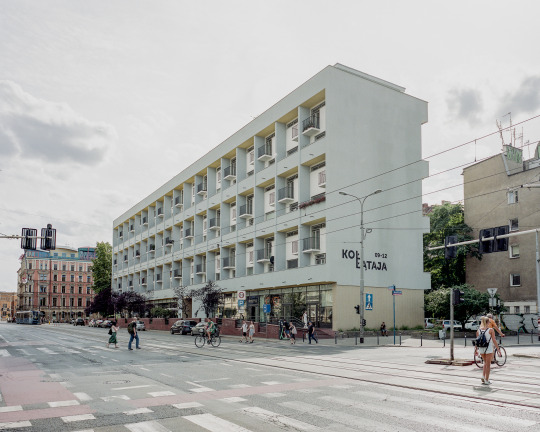


Mezonetowiec (from the English maisonette, "two-level apartment") – a residential building at Kołłątaja st. in Wrocław, erected in 1958-1960 according to the design of Jadwiga Grabowska-Hawrylak, Edmund Frąckiewicz and Igor and Maria Tawryczewski; entered into the register of monuments in 2017. It is the first apartment block in Poland from the communist period with two-level apartments, with two-sided lighting of the rooms and two balconies per apartment, and a rare example of a building in which Le Corbusier's assumption regarding the functionality of a residential building was met, including of commercial premises. It underwent a major renovation of the facade in 2022.
#analog#mamiya 7#mamiya#architecture#postwar modernism#modernism#plattenbau#polska#poland#new topographics#deadpan#wroclaw#medium format#120 film#kodak portra 400
40 notes
·
View notes
